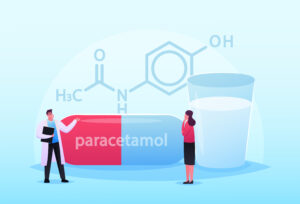//Blog
Over-the-Counter & Non-Medical Pain Management
Pain is an inevitable part of life, whether it’s a headache, muscle ache, or chronic condition. Effective pain management is crucial for maintaining quality of life. In the UK, over-the-counter (OTC) medications offer a convenient and accessible way to manage various types of pain. This article delves into the different types of OTC pain relief available in the UK, supported by research and insights from PubMed, and guide you on where to purchase these medications online.
Additionally, we’ll discuss non-medical treatments that can complement or even replace medication in certain cases.
Understanding Pain: Types and Causes
Before discussing OTC pain relief options, it’s essential to understand the types of pain people commonly experience:
- Acute Pain: This is short-term pain that typically follows an injury or surgery, like a sprained ankle or a cut.
- Chronic Pain: This type of pain lasts longer than six months and can stem from conditions like arthritis, fibromyalgia, or back pain.
- Neuropathic Pain: Caused by nerve damage, this pain can result from conditions like diabetes or shingles.
- Inflammatory Pain: Often associated with conditions like rheumatoid arthritis, this pain results from inflammation in the body.
Over-the-Counter Pain Relief Options in the UK
The UK offers a range of OTC medications for pain relief, each designed to address different types of pain. Here’s a breakdown of the most common options:

- Paracetamol (Acetaminophen)
Paracetamol is a widely used analgesic and antipyretic, effective for treating mild to moderate pain such as headaches, menstrual pain, and osteoarthritis. It’s a first-line treatment for many pain conditions because of its safety profile, especially when taken at recommended doses.
How It Works:
Paracetamol works by inhibiting the production of prostaglandins in the brain, chemicals that cause pain and fever. Unlike nonsteroidal anti-inflammatory drugs (NSAIDs), it doesn’t reduce inflammation, making it a suitable option for those who can’t tolerate NSAIDs.
Research Insights:
A PubMed study found that paracetamol is effective in managing pain associated with osteoarthritis and is often recommended as a first-line therapy .
- Nonsteroidal Anti-Inflammatory Drugs (NSAIDs)
NSAIDs, including ibuprofen, aspirin, and naproxen, are commonly used to reduce inflammation, pain, and fever. They are effective for conditions like menstrual cramps, migraines, and musculoskeletal pain.
How They Work:
NSAIDs block the enzyme cyclooxygenase (COX), which is responsible for the production of prostaglandins, thereby reducing inflammation and pain.
Research Insights:
A review of clinical trials available on PubMed suggests that NSAIDs are effective in treating various types of pain, including postoperative pain, musculoskeletal disorders, and dental pain . However, long-term use can lead to gastrointestinal issues, so they should be used with caution.
- Topical Pain Relievers
Topical pain relievers, such as creams, gels, and patches containing ingredients like ibuprofen, diclofenac, or capsaicin, provide localized pain relief. These are particularly useful for joint and muscle pain.
How They Work:
Topical pain relievers work by delivering the active ingredient directly to the site of pain, minimising systemic absorption and reducing the risk of side effects compared to oral medications.
Research Insights:
Studies on PubMed indicate that topical NSAIDs are as effective as their oral counterparts for localised pain relief, particularly in osteoarthritis and soft tissue injuries .
- Combination Medications
Combination OTC medications, such as co-codamol (paracetamol and codeine), provide stronger pain relief by combining two analgesics. These are typically used when single medications are insufficient.
How They Work:
The combination of paracetamol’s analgesic effects with the opioid properties of codeine results in a more potent pain-relieving effect.
Research Insights:
Research shows that combination analgesics are more effective than monotherapy for managing moderate to severe pain, but they come with a higher risk of side effects like drowsiness and constipation .
Safety and Considerations
While OTC pain medications are generally safe, it’s important to use them correctly to avoid potential side effects and interactions:
- Dosage: Always follow the recommended dosage on the package. Overdosing on paracetamol can lead to liver damage, while excessive NSAID use can cause gastrointestinal issues.
- Interactions: Be aware of potential drug interactions, especially if you’re taking other medications. For example, combining NSAIDs with certain blood pressure medications can reduce their effectiveness.
- Chronic Use: Long-term use of any pain medication should be discussed with a healthcare professional to prevent potential complications.
Where to Buy Over-the-Counter Pain Relief in the UK
Purchasing OTC pain relief has never been easier, thanks to the availability of online pharmacies. The Health Pharmacy offers a wide range of OTC pain relief options, including paracetamol, ibuprofen, topical gels, and combination painkillers, and better yet a team of Pharmacists checks all orders for appropriateness and suitability so you can ensure your choice of pain medicines is backed up and approved by a qualified UK Pharmacist. Shopping online allows you to conveniently browse and purchase the medications you need without leaving your home.

Non-Medical Treatments for Pain Relief
While OTC medications can be effective, non-medical treatments also play a crucial role in managing pain, especially for those looking to avoid or reduce drug use. These methods can be used alone or in conjunction with OTC drugs.
- Physical Therapy
Physical therapy involves exercises and stretches tailored to strengthen muscles, improve mobility, and reduce pain. It is particularly effective for musculoskeletal pain, such as back pain or arthritis.
Evidence: A systematic review published in the Journal of Physiotherapy found that physical therapy is highly effective for chronic pain conditions, helping to improve function and reduce pain levels .
- Mind-Body Techniques
Techniques such as meditation, mindfulness, and deep breathing can help manage pain by reducing stress and promoting relaxation. These methods work by influencing the brain’s perception of pain.
Evidence: Research in the Journal of Pain indicates that mindfulness meditation can significantly reduce pain intensity and improve the quality of life for chronic pain sufferers .

- Acupuncture
Acupuncture, a traditional Chinese medicine practice, involves inserting thin needles into specific points on the body. It is believed to stimulate the body’s natural painkillers, such as endorphins.
Evidence: According to a meta-analysis in the Journal of Pain Research, acupuncture is effective for various types of chronic pain, including osteoarthritis and lower back pain .
- Hot and Cold Therapy
Applying heat or cold to the affected area can provide immediate relief from pain. Heat therapy increases blood flow and relaxes muscles, while cold therapy reduces inflammation and numbs the area.
Evidence: Studies have shown that alternating between hot and cold therapy can be particularly beneficial for acute injuries, such as sprains .
Conclusion
Effective pain management is essential for maintaining a good quality of life, whether you’re dealing with a short-term injury or a chronic condition. The UK offers a variety of OTC pain relief options that can be safely used to manage different types of pain. However, it’s important to use these medications responsibly and seek professional advice if your pain persists or worsens.
For a comprehensive selection of pain relief products, visit The Health Pharmacy to find the right solution for your needs.
